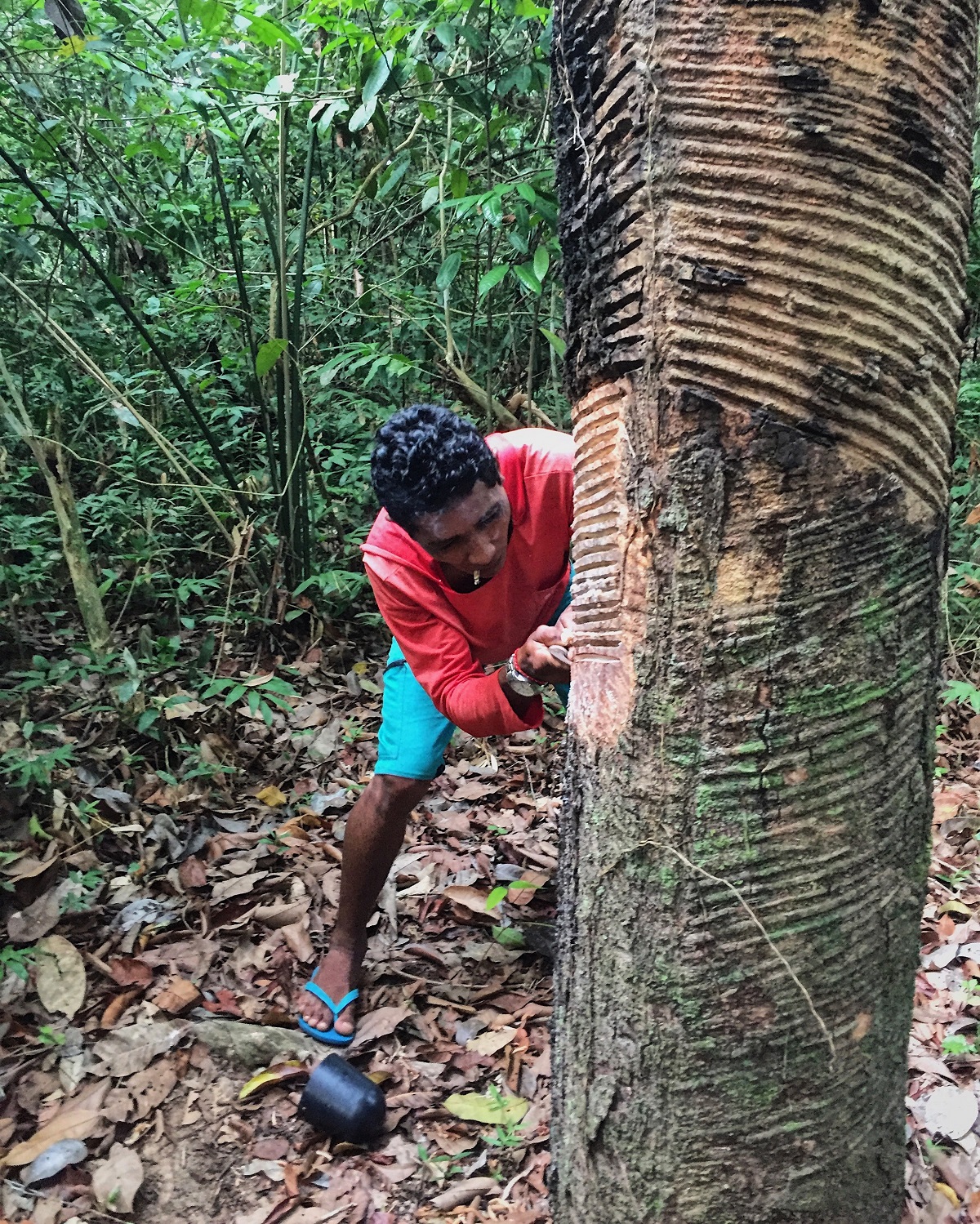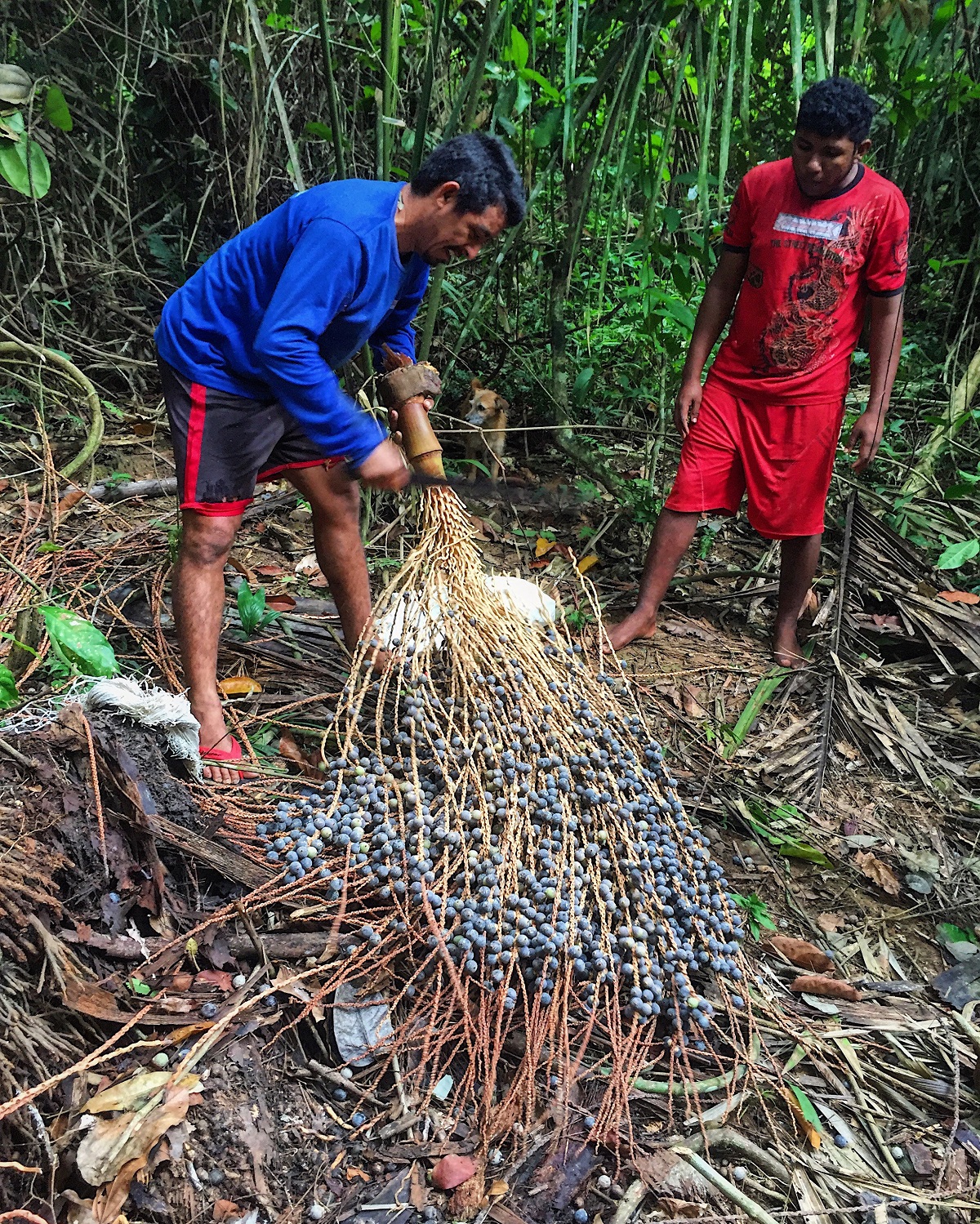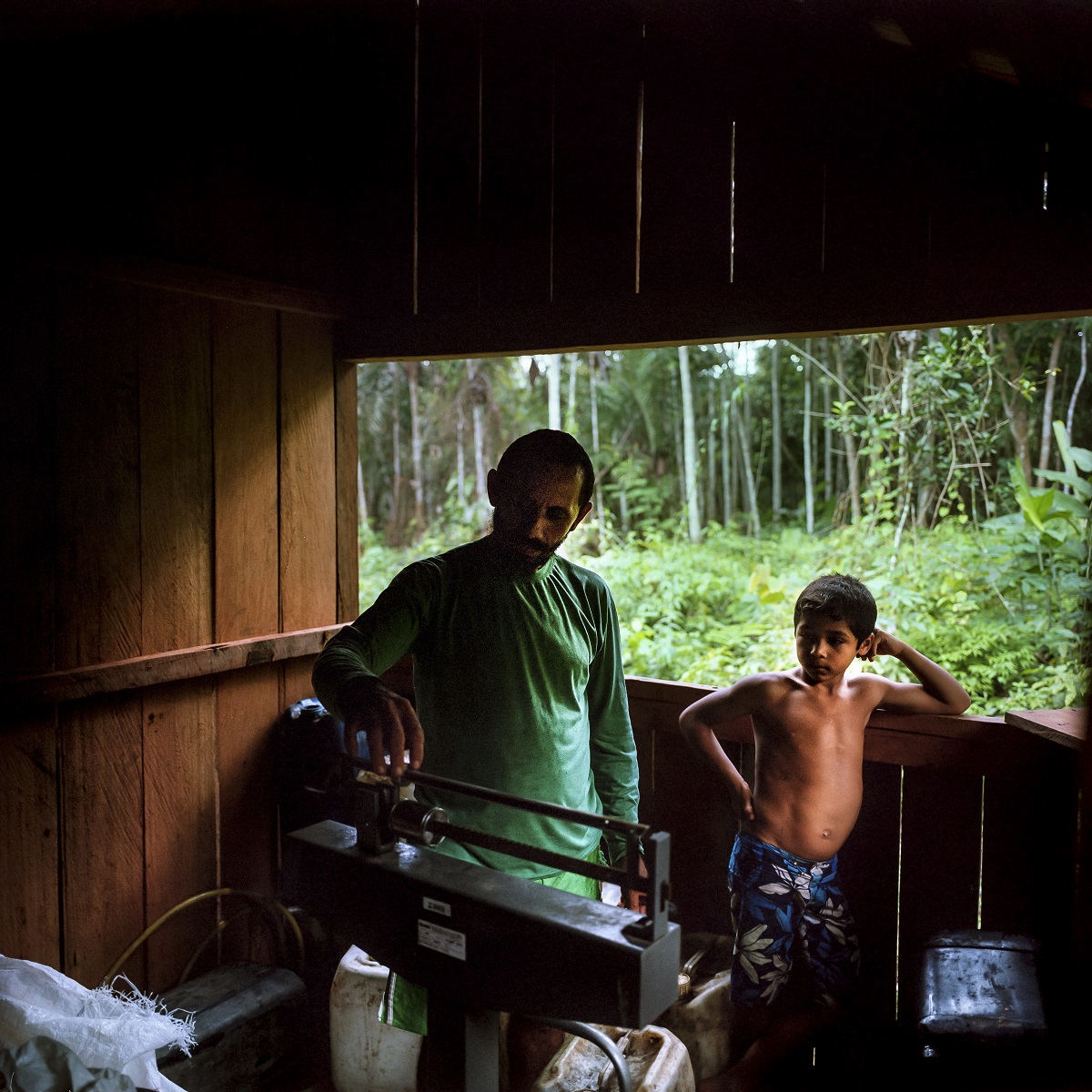- They comprise a diverse range of people, from indigenous groups to fishing communities descended from rubber tappers.
- In 2015, more land defenders were killed in Brazil than any other country put together, according to watchdog organization Global Witness.
- Among land defenders, indigenous activists are the most-targeted for their work and activism.
MUNICIPALITY OF ALTAMIRA , Brazil – Brazil has made headlines recently for almost entirely negative reasons — whether it is the on-going corruption scandal known as Operation Car Wash, which has taken down numerous politicians since 2014, or the staggering homicide rates that are tearing through the northeast of the country, where an average 16 murders occur daily.
There is also the news of yet more precious forests being cut down in the country’s ever-expanding frontier; according to Brazil’s National Institute for Space Research (INPE) deforestation spiked 29 per cent in 2016 – representing a 75 percent increase after a historic low in 2012. In short, Brazil has had a bad year — and it’s not getting any better.
One by-product of this crisis is that Brazil is officially the most dangerous place in the world to be an environmental activist. As of 2015, more land defenders were killed in Brazil than any other country put together, according to Global Witness, a leading human rights watchdog organization. Indigenous activists were the most-targeted within that category. The latest figures from 2016 show that the situation is only worsening, with a 22 percent increase in assassinations and a 206 per cent increase in assaults, according to Brazil’s Pastoral Land Commission.
The latest manifestation of this violence is grim. Earlier this month it was reported that 13 members of a tribe in the Amazonian state of Maranhao were hacked at with machetes by ranchers disputing their land. Just last week, on the 29th of May, 10 land rights activists that were members of the Landless Workers Movement were massacred by police who had come in to their settlement to investigate a murder case.
Experts warn that the situation could become more dire as the current administration, which is dominated by the agribusiness and mining lobbies, attempts to dismantle key environmental safeguards that protect national parks and reserves where indigenous and Afro-Brazilian communities live.
Meanwhile, numerous studies have proven that these communities, alongside landless peasants and small-scale producers, are the best custodians of the land. A recent report by Brazil-based research institute Imazon showed that privately-held land in Brazil had the highest level of illegal deforestation (at 59 percent) while indigenous people’s reserves and conservation units had the least, at 27 percent and 1 percent, respectively. Cattle ranching and the expansion of monoculture crops such as soy and eucalyptus are the primary drivers of this deforestation, say experts. Meanwhile, the UN reports that global competition for land and water linked to the demands of the global market and climate change are driving environmental degradation and violence.
Yet despite this gloomy trend, Brazil’s land defenders – who comprise a diverse range of people, from indigenous communities to fishing communities descended from rubber tappers – are holding back against illegal logging, simply by living as they do. Though the “economic output” of these people is not highly valorized – if at all – their way of life keeps the forest standing. By tapping the forest of its products on a seasonal basis, these smallholders act as a crucial buffer against deforestation and ecological destruction.
Following is a snapshot of the lives of some of Brazil’s threatened land defenders, living in the country’s second largest state of Pará.
“Xoba:” Rubber Tapper
“Xoba” is 27 years old and lives in the Xingu Extractive Reserve. He collects Brazil nuts and taps rubber for a living. The Xingu Extractive Reserve, created in 2008, is vast piece of land owned and protected by the Brazilian state, which allows ribeirinhos – “river people,” like Xoba – to tap the forest of its products year-round.

Like everyone in the reserve, he has two names: his nickname, Xoba, and his real name, Manuel Barbosa Da Silva. He is by far the youngest rubber tapper in his reserve.
Xoba sets out at 6 a.m. each day to extract latex from wild Seringa trees along a 4-mile long trail behind his home. The task takes over two hours, and on his return, a colleague goes out to collect the latex which has by then dripped into plastic cups fastened at the bottom of the tree. (On an average day he collects 5 gallons of latex).
Xoba says he loves tapping rubber, because he can work in the cool of the shade and go home before midday to tend to the crop or go out fishing when he’s done on the trail.
Most importantly, it is a way of life that can potentially last forever.
“You have to treat the tree with care,” says Xoba. Wild rubber trees are very sensitive, he explains; they can only be scored once a day during the dry season – if a tree is cut too deeply, it dies. The trees that he has been scoring have many scars on their trunks from over a hundred years of being tapped for latex.
Tapping wild rubber is a dying profession, and there are only three rubber tappers left in the Xingu reserve.
There is hope, however. While many ribeirinhos (river people) living in the Xingu reserve chose to follow a different path – collecting Brazil nuts or fishing, or simply never learning the skill – there is now an incentive to re-learn it after a national firm, Mercur, signed a contract to buy latex from the community in 2010. (Wild latex is still prized as it produces the highest quality rubber that exists).
Asked if he will teach his children the skill one day, Xoba enthusiastically replied: “Of course!” He is already teaching his nephew.
“Caboco:” Fisherman
Jailson Juruna, 36, is a sharp-witted and charismatic member of the Juruna tribe. He is a proud father of five, and a fisherman, like the rest of his tribe. He traps fish using a net or an improvised harpoon that is fashioned from an iron bar like that found in the foundations of houses.

The Juruna is an indigenous community that lives on the “Big Bend” of the Xingu River, a major tributary to the Amazon River. He is the second-chief of his community, in Murati, situated less than 10 miles downriver from the the world’s third largest dam, the Belo Monte hydroelectric dam – a multibillion-dollar mega development completed in 2015.
The effects of the dam have been devastating for the community, having drastically reduced fish stocks – the staple diet for the Juruna – and changed their customs and means of subsistence.
“Everything had always revolved around fish,” he says. “Now the river is dirty, and people are no longer buying the fish.” The Juruna have traditionally lived off several varieties of the Acari fish – eating some and selling others as ornamental fish in the nearby city of Altamira. The ornamental Acari Zebra is unique in that it is only found on the “Big Bend” of the Xingu, which has its own unique eco-system.
Caboco and his community are currently in mourning. His younger brother, Jarliel Juruna, drowned in late November 2016 while attempting to dive for a prized species of Acari, which requires diving to depths of up to 20 meters (65 feet) with compressors. On this attempt, Jarliel’s compressors malfunctioned, and it was too late by the time he surfaced.
Yet overall the Juruna community is resilient. They have embarked on an independent project that monitors fish stocks along the Xingu River, with the help of the Brazil-based Socio-Environmental Institute (ISA), and are holding Norte Energia to account for what they view as a disastrous compensation scheme (in 2015 the state public prosecutor’s office filed a civil lawsuit against Norte Energia accusing it of causing “ethnocide” because of the way it implanted it’s compensation scheme in the years of the dam’s construction). To date, the company has been sued $20 million dollars by the state for failing to comply with agreed-to licensing terms, along with other irregularities.
Norte Energia has categorically denied these claims, as previously reported by Mongabay.
“We are still fighting,” Caboco says. But he explains their next worry is a Belo Sun project – a Canadian-owned mining giant that has been acquiring land upriver from the Juruna’s reserve, and was recently given an operating license by the state (though it was then suspended in court by the public prosecutor’s office of Altamira). It is projected to be the largest open pit goldmine in Brazil and will use energy produced from the Belo Monte dam to run the mine.
With the current political and economic climate in Brazil, it remains a David-versus-Goliath battle for the Juruna.
“Sinha:” fisherman and woodworker
“Sinha,” 40, is half Curuaia. His mother is from the Curuaia community, a neighboring tribe that lives on the other side of the Xingu River from him. He’s lived in this region his whole life and his family live by hunting, fishing and growing a small crop – while collecting Brazil nuts earn his family some money.

Sinha lives within the Xingu Extractive Reserve and is a cantineiro – a manager of a trading post at Morro Grande. The Xingu reserve produces wild latex, Brazil nuts, and products from the Babassu nut, which is sold to major distributors across Brazil. He is one of three cantineiros in Xingu elected by his community to ship goods to and from the city, as well as keeping account for the community and paying the producers on the spot. It is a job with a lot of responsibility, and he takes a small percentage of the sale for fulfilling this role, though it is largely a symbolic amount.
“Life is better now,” he says, referring to the creation of the reserve. Before it was created, Sinha’s community had no land rights and lived under threat from miners and loggers, as well as grilheiros (“land thieves”).
His daily routine consists of waking up at 5:30 a.m., taking his kids to school on a handmade wooden boat and coming home in time for breakfast. He then sets out for the day to garden or hunt; before sundown, he works with wood, carving turtle-shaped stools, ornate paddles and fish-shaped cutting boards from salvaged portions of naturally-felled trees. At the end of the day, if there’s time, he goes out to fish.
Though he is not a man of many words, it is clear that his passion is woodwork. Right now it is a hobby, he admits, though he hopes to spend more time making handicrafts to sell in the city.
Pedro Pereira: Copaiba-collector and rubber tapper
Pedro Pereira de Castro, 52, is one of the few ribeirinhos in the region who doesn’t have a nickname, and it reflects his matter-of-fact character.
“I worked in the city,” Pedro says. “But I never liked the city. My life has always been in the forest. I was born there and that is where I feel good.” Before the Resex was created in 2004, Pedro had worked as a gold miner, and with barely any education he couldn’t get any decent jobs in the city.

He eventually educated himself and went back to the forest; he now taps latex from the wild Seringa tree and extracts copaiba sap – a medicinal and aromatic oil – from the Copaibera tree for a living, alongside fishing and hunting.
He lives in Riozinho do Anfrisio Extractive Reserve, the first such reserve in the region, named after a rubber baron who previously owned the land that the reserve lies in. Pedro lives deep in the jungle with his family in an area that takes at least two days by boat to get to from the nearest city of Altamira.
While he is not working in the forest, he works as a cantineiro, a manager of his community’s trading post. It is a relatively new approach to trading forest products, which he pioneered.
The cantina allows the community to work collectively, as opposed to individually.
Life has become much more secure for the riberinho families living in this reserve, who were often at the receiving end land-related violence. (Pará state, where Pedro’s reserve is, continues to have among the highest indices of homicide across the country, and also has the highest level of deforestation).
To this day, Pedro’s reserve is being invaded and illegally deforested, but his community is holding out.
Banner image: Caboco on a Sunday fishing trip. Photo by Maximo Anderson for Mongabay.
Maximo Anderson is a freelance journalist and photographer currently based in Colombia. You can find him on Twitter at @MaximoLamar.
FEEDBACK: Use this form to send a message to the author of this post. If you want to post a public comment, you can do that at the bottom of the page.

